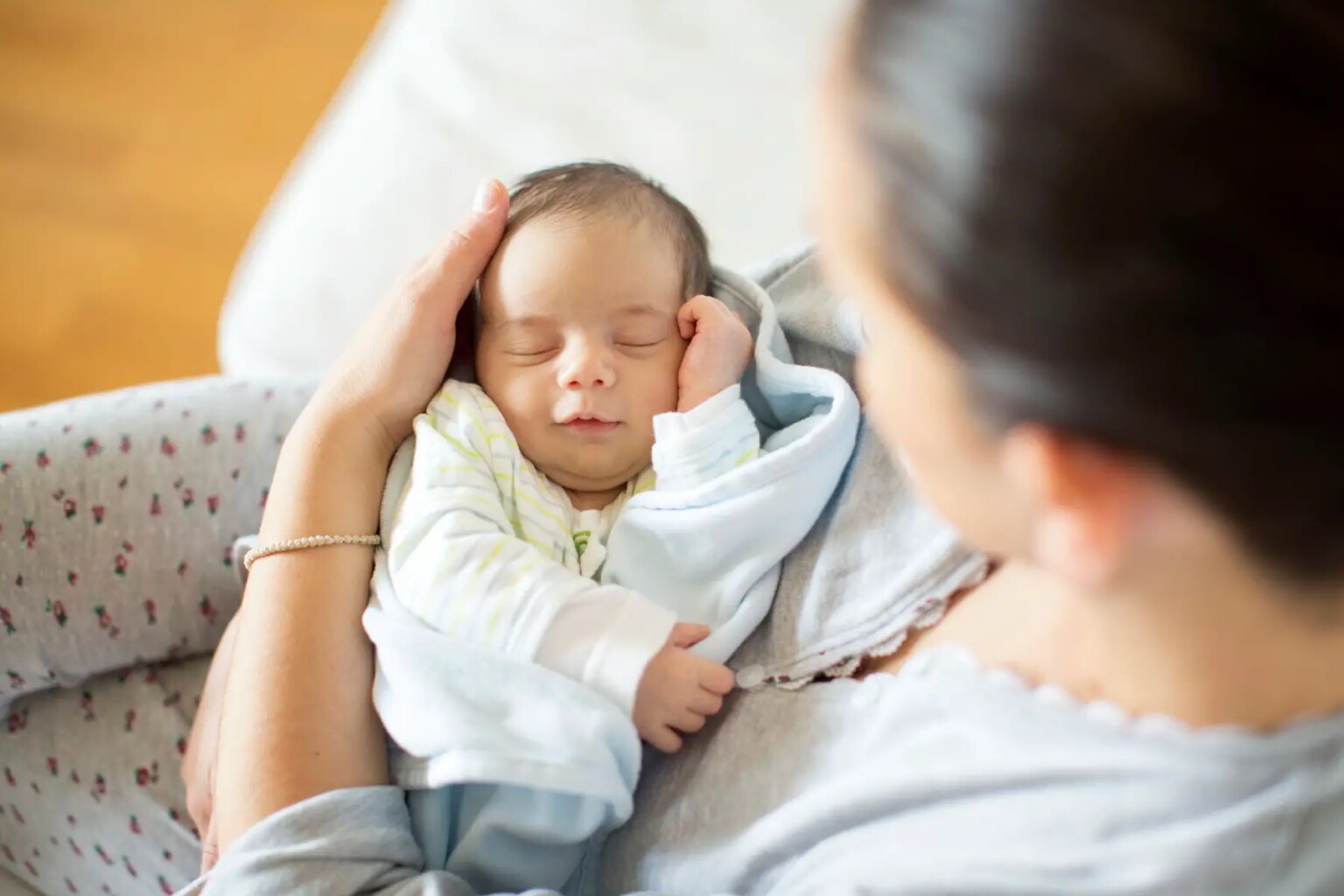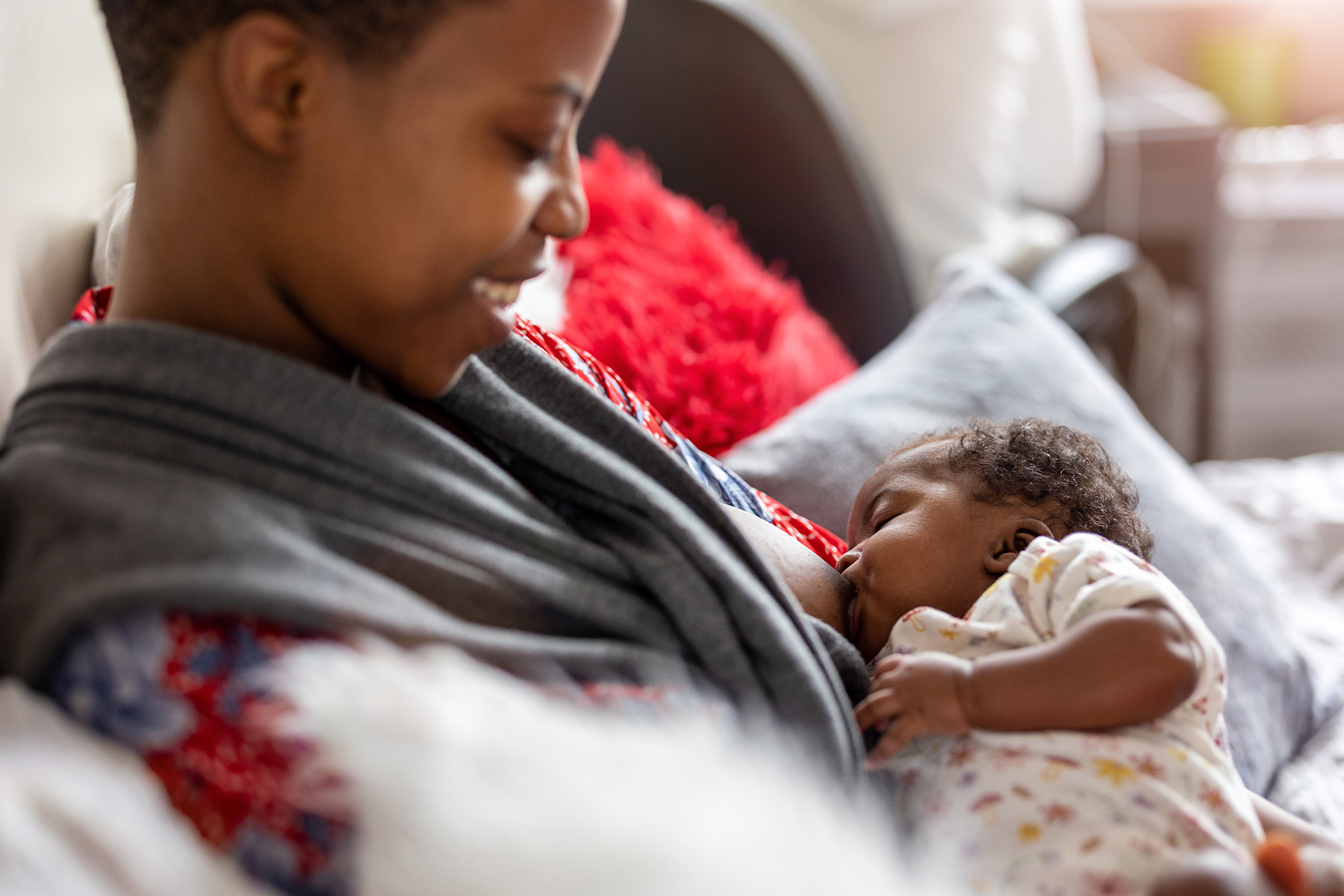Whenever you happen to live in the world, welcoming a new member into your family can be an exciting and scary experience. And if you are an expat in Japan, you face the added challenge of caring for a baby while learning how to navigate a different culture and healthcare system.
So, to help you prepare for the journey ahead, this article outlines everything you need to know about having a baby in Japan, including:
- Pregnancy and childbirth in Japan
- How to access maternity services in Japan?
- Insurance for maternity costs
- Fertility treatments in Japan
- Pregnancy testing
- Pre-natal care in Japan
- Giving birth in Japan
- Post-natal care in Japan
- Registering a birth in Japan
- Adoption in Japan
- Non-residents, visitors, and tourists giving birth in Japan
- Parental leave in Japan
- Child benefits in Japan
- Useful resources
Cigna Global
Expecting a baby in Japan? Enjoy peace of mind with Cigna Global’s private healthcare. Gain access to top maternity care, pediatricians, specialists, and a global network tailor-made for your growing family. Start your parenting journey with confidence – Cigna Global has you covered.
Pregnancy and childbirth in Japan
If you are planning on having a baby in Japan, you will be glad to know that the country’s healthcare system provides a very high standard of care. In fact, it ranked among the top five in the world in both the OECD’s Health at a Glance of 38 countries and Legatum Prosperity Index of 167 nations in 2021.
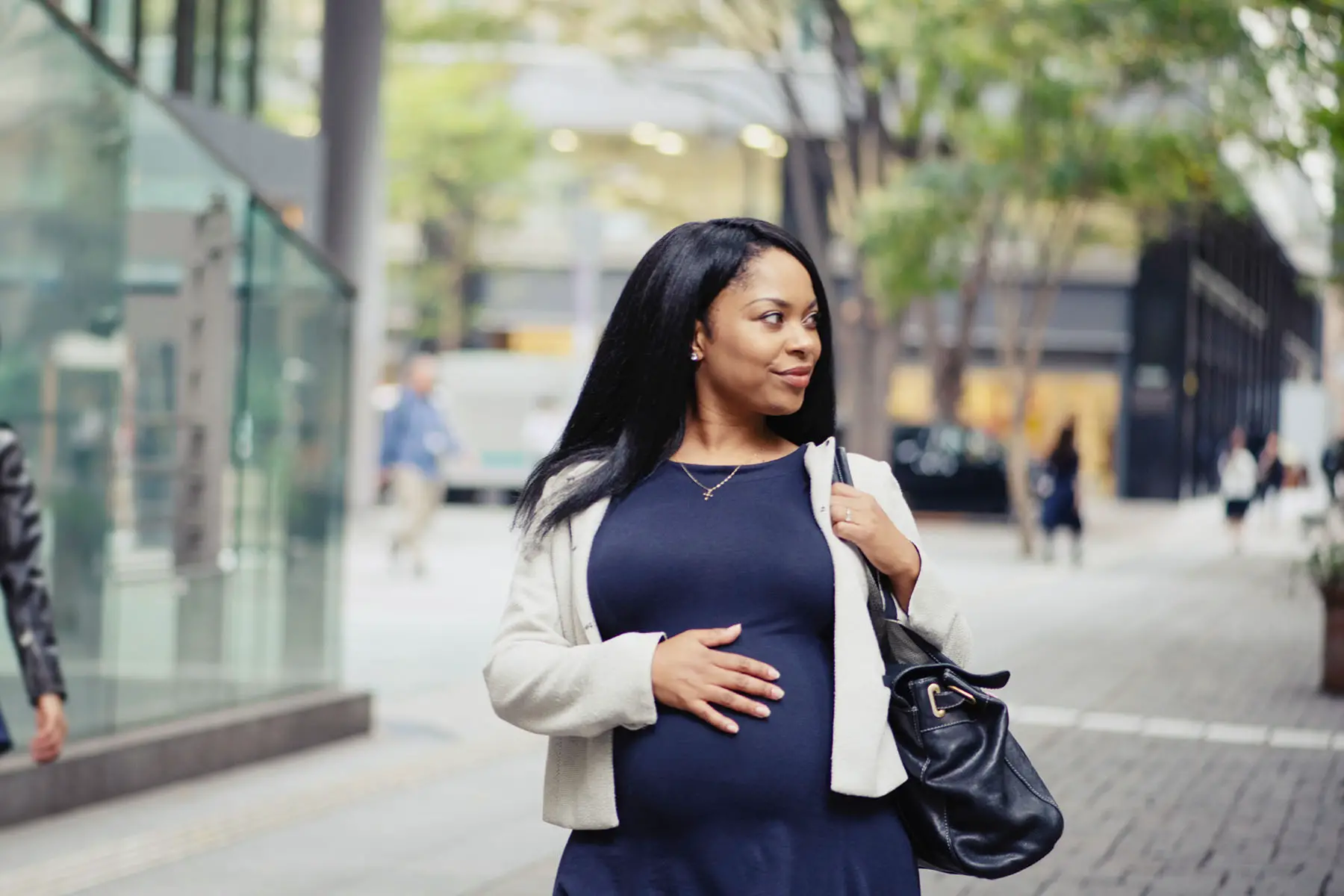
Moreover, Japan has one of the lowest infant mortality rates in the world, amounting to two deaths per 1,000 live births in 2023. Notably, this figure – like Japan’s birth rate itself – has also been in steady decline since 1950.
Maternity vouchers for parents
Given these impressive statistics, it may come as a surprise to learn that public health insurance in Japan does not cover childbirth. On the contrary, expectant parents must rely on maternity vouchers (妊産婦健康診査費用補助券, nin sanpu kenko-shinsa-hiyo hojoken) from their local municipality to help cover the majority of medical costs of standard antenatal care and delivery.
During pregnancy, delivery, and post-natal period, women can, however, rely on the services of:
- Obstetrician-gynecologists
- Doctors
- Public health nurses
- Midwives
Around 90% of registered midwives work in hospitals and clinics. Some large hospitals across the country have OB-GYN departments (産婦人科, sanfujin ka) that provide pregnancy confirmation and prenatal checkups and have labor and delivery facilities.
Maternity hospitals (産婦人科医院, sanfujin ka iin), on the other hand, are specialized in pre- and post-natal care and sometimes have additional departments such as Pediatrics. However, because these are less abundant, expectant mothers often need to make an appointment for their delivery soon after they confirm their pregnancy.
Similarly, birth centers, in which midwives manage pre- and post-natal checkups, labor, and delivery, are limited in numbers. They only accept a small number of pregnant people and are contracted by OB-GYNs and hospitals to deal with medical emergencies.
How to access maternity services in Japan?
As you would expect, you need to be pregnant in order to access maternity services in Japan. If you plan on giving birth in the country, you must also ensure that your residency visa is in order and check your health insurance policy to see what it covers.
After taking a home pregnancy test and receiving a positive result, you will need to visit an obstetrician or doctor at your local clinic or hospital. They will confirm your pregnancy with a blood test and an ultrasound. They will also issue you with a pregnancy notification form (妊娠届出書, ninshin todokede sho), and discuss your options for delivery.

You will then need to bring the notification form to your municipal offices to register your pregnancy. The municipality will issue you a Maternal and Child Health Handbook, which is also available in the form of a phone app.
A staff member or nurse can answer any questions you may have about health concerns or preparing for your delivery. You will also receive a maternity badge (マタニティーマーク, matanitei maku) to display on public transportation to alert others that you qualify for priority seating (優先席, yusen seki).
Insurance for maternity costs
It is important to be aware that public health insurance in Japan does not cover prenatal check-ups and delivery costs. Instead, local municipalities provide expectant mothers with vouchers to cover most of these expenses.
For this reason, many pregnant people choose to take out private health insurance to cover costs that go beyond the scope of the vouchers. This might include booking a private room for the delivery or pain medicine such as an epidural, which is not covered by Japanese public health insurance.
Some companies that offer private health insurance for expats in Japan include:
Fertility treatments in Japan
Japan’s public health insurance covers 70% of the costs of fertility treatments such as in-vitro fertilization and artificial insemination for married or common-law heterosexual couples.
They must be diagnosed with infertility, which usually requires a year of trying unsuccessfully for a baby. Women under 40 can have up to six treatment cycles per child, while women aged 40 to 42 can have up to three. There is no age limit for men.
It’s important to note that LGBTQIA+ couples have little to no access to fertility treatment. Official medical guidelines from the Japan Society of Obstetrics and Gynaecology (JSOG – 日本産科婦人科学会, Nihon Sanka-Fujinka Gakkai) reserve fertility treatments for married couples only. While these guidelines are legally non-binding, they carry enough weight that only a handful of doctors defy them to accommodate lesbians and single women.

Infertility counseling is available through doctors and midwives. The Japan Midwives Association also provides a list of midwives across the country.
Is surrogacy common in Japan?
Surrogacy is very uncommon in Japan, and while no laws prohibit the practice, it is often viewed as exploitative. It can also leave the citizenship and residency of the child in a vulnerable position.
Pregnancy testing
Home pregnancy tests are widely available at pharmacies and do not require a prescription from a doctor. Tests are inexpensive with costs starting at around ¥800.
As previously mentioned, once you receive a positive result, you will want to visit your obstetrician or doctor at your local clinic or hospital. At this appointment, a blood test and ultrasound will confirm your test results. You can expect to pay up to ¥10,000 or more for these tests at the time of the exam.
Pre-natal care in Japan
Naturally, if you are having a baby in Japan, you will want to take good care of your health. However, what this actually entails may be somewhat different in Japan than in your country of origin. For instance, while Japanese doctors do recommend avoiding alcohol, they also consider foods such as raw sushi quite safe.
You may also find that locals constantly warn you to keep the baby warm by doubling up coverage on your tummy. Surprisingly, your doctor may even recommend taking a soothing soak in a Japanese hot spring (温泉, onsen), as long as the temperature is safe and you are careful not to slip.
Depending on their body type and frame, some expectant mothers may also struggle to stay within the recommended weight gain of no more than seven to 12 kilograms, as outlined by the Ministry of Health, Labour, and Welfare of Japan (MHLW – 厚生労働省, Kosei Rodo Sho).
Health checkups during pregnancy
Doctors in Japan recommend having 14 health checkups during a normal pregnancy, either at the hospital or clinic of your choice. This typically includes having one checkup per month until your 23rd week, followed by one checkup every two weeks from the 24th until the 35th week.
If any issues arise during your pregnancy, your healthcare provider can recommend more frequent health checks or refer you to a hospital or facility with more specialized treatment options.
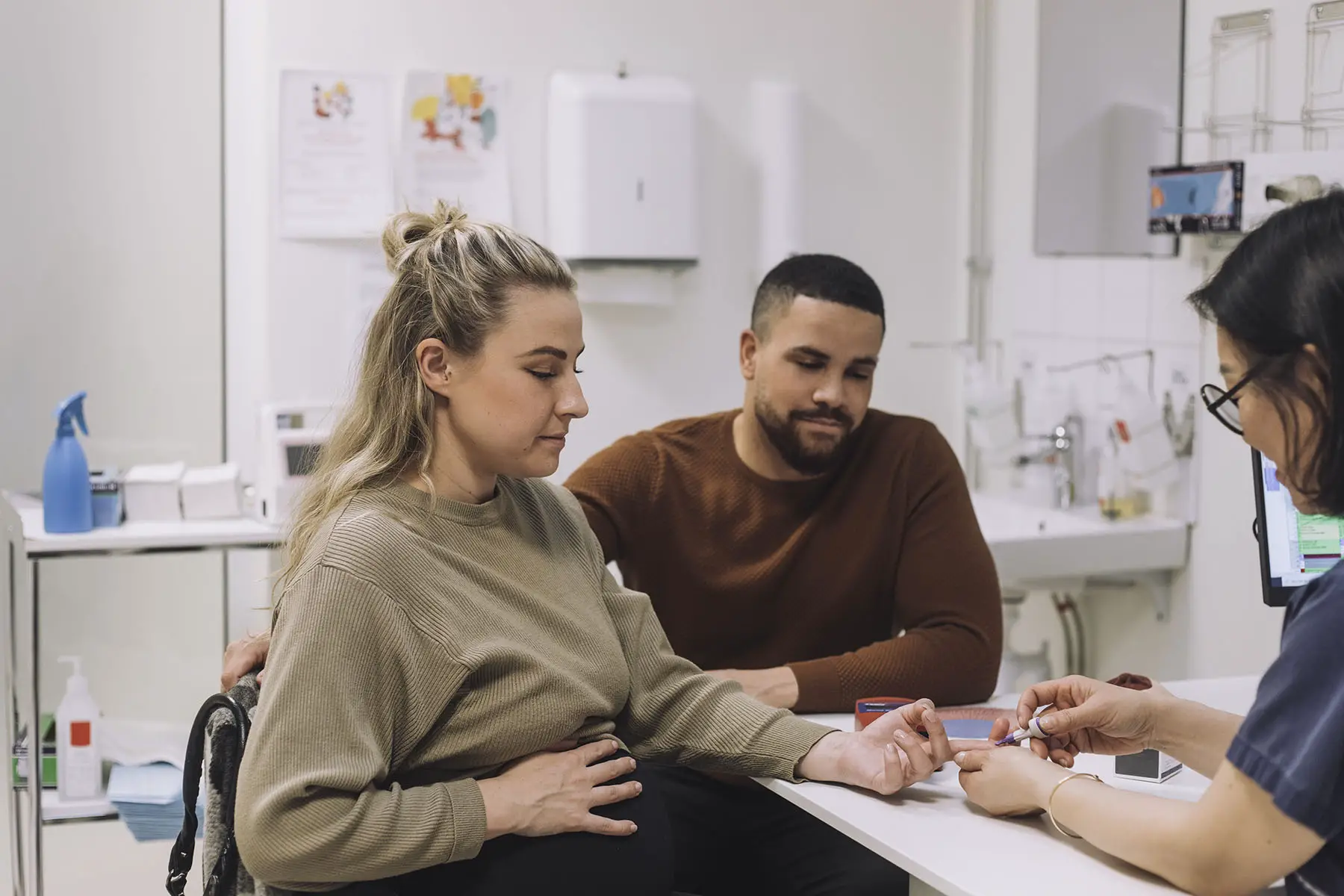
Checkups are brief and last about 20 minutes. During the checkups, staff will likely:
- Record your weight and blood pressure
- Take a urine sample
- Do a blood test
- Conduct an ultrasound
- Perform an anatomy check to monitor the baby’s growth
The cost of health checkups
Depending on your chosen clinic, you can expect to pay between ¥5,000 and ¥10,000 per checkup. To help cover these costs, your local municipal office will provide a handbook and health vouchers. While the value of the coupons varies between municipalities, it generally covers around ¥100,000 of the checkup costs. You’ll also receive information about parenting classes, government programs, and – in some cases – vouchers for massages or house cleaning services.
It is important to bring your health handbook with you to each checkup during your pregnancy and your child’s early life, as it records all of the results, vaccinations, and doctor’s notes.
Notably, the National Center for Child and Health Development (NCCHD – 国立成育医療研究センター, Kokuritsu Seiiku Iryo Kenkyu Senta) considers inactive vaccinations, such as influenza, safe for pregnant people. However, you should avoid live vaccines (e.g., against measles, rubella, varicella, and polio).
The following facilities are popular with expats as they provide better access to English-speaking staff and epidurals:
- Aiiku Hospital
- Hiroo Minegishi OB-GYN Clinic
- Japanese Red Cross Medical Center
- Orito Clinic
- Sanno Birth Center (at Sanno Hospital)
- St. Luke’s International Hospital
- Takanawadai Ladies Clinic
Antenatal classes
Local municipal offices, as well as clinics and hospitals, offer free parenting classes. You will receive information about class times and schedules when you register your pregnancy at your local municipality office. Just be aware that classes fill up fast, so it’s best to sign up as soon as you can.
Antenal classes generally cover the following:
- An explanation of local government services available before and after delivery
- How to safely bathe a baby
- Information about delivery and nursing
- Nutritional guidelines during pregnancy and for children
- Oral care
Some municipalities may also offer maternal yoga or cooking classes, and you can your local office for more information about this. You may also be eligible for a free home visit from a public health nurse or midwife who will be available to discuss any questions about your pregnancy, delivery, nursing, or any other concerns.
Giving birth in Japan
It is important to think ahead about your preferences for receiving care during your pregnancy and delivery in Japan. It also helps to manage your expectations.
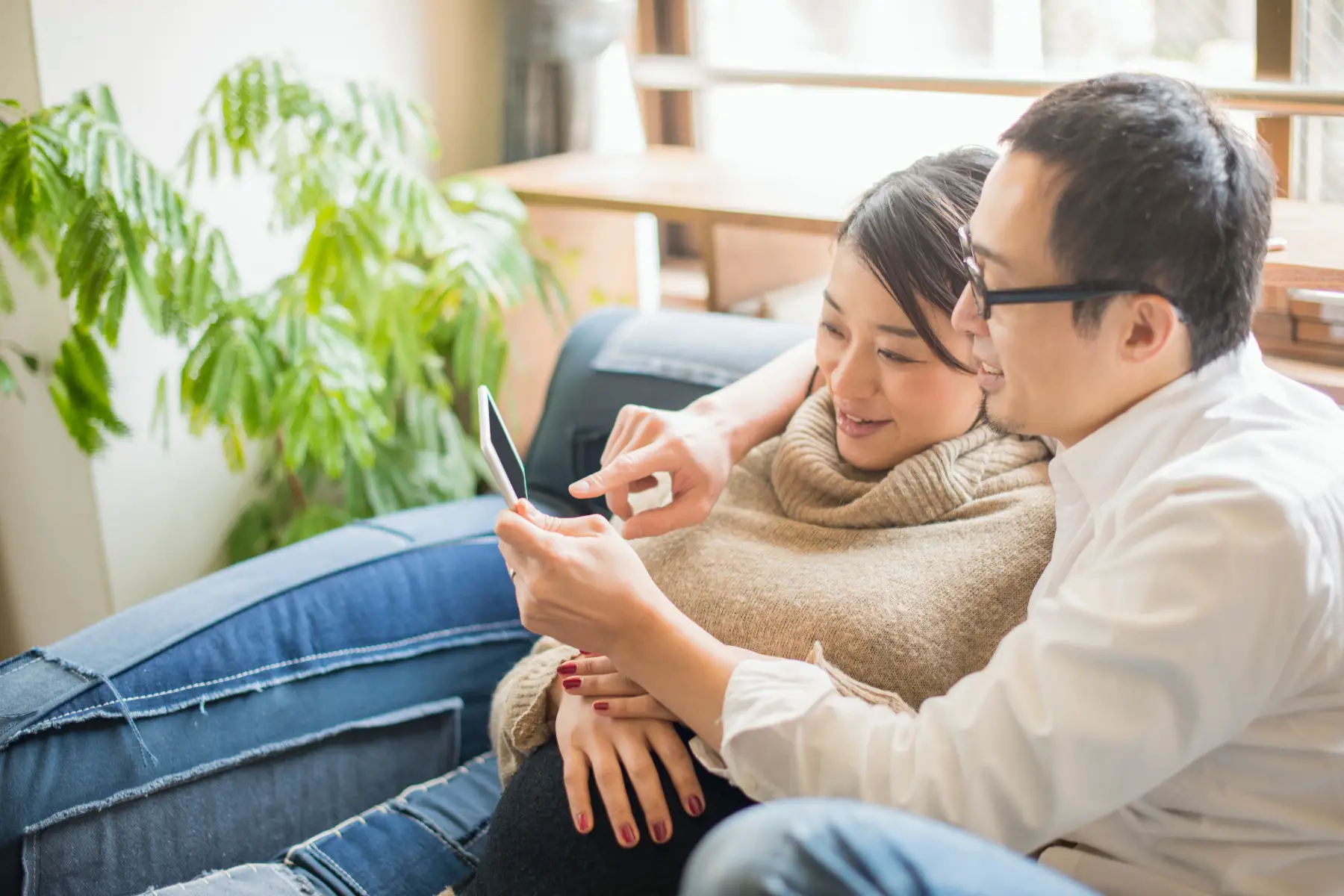
For instance, some expats may find it surprising that it is common to see a different doctor with each visit. Moreover, if you would rather have access to English-speaking doctors, nurses, and midwives, or receive an epidural during delivery, your birth options will be limited. It may also come as a shock for some expats that episiotomies are the norm in Japan.
It is best to decide where you want to deliver your baby as soon as you know you are pregnant. That is because many clinics and hospitals in Japan will only do this for patients who have been in their care since early on in their pregnancy.
Therefore, you should make a reservation and put down a deposit with your clinic or hospital no later than 20 weeks into your pregnancy. This is especially important if you would like an English-speaking doctor, nurse, or midwife during your delivery.
Rules for fathers
When it comes to giving birth, it is important to understand that some clinics do not allow men – not even the baby’s father – to be present during the delivery. In fact, men are not as involved in pregnancy and childbirth as they are in some countries and are often exempt from maternity courses, health checkups, and the delivery itself. Naturally, this might impact how you and your partner feel about the experience of having a baby in Japan.
Traditionally, many women in Japan will return to their parents’ homes for several weeks after giving birth to gain extra assistance, which is called satogaeri shussan (里帰り出産).
Checking in to the hospital or clinic
You can check into the hospital or clinic when your reservation begins and remain there for five days after a vaginal delivery or up to eight days after a cesarean (C-section) delivery. Notably, you will need to remove any jewelry, nail polish, fake nails, and piercings before checking in.
You will need to bring the following items with you when you check in to the hospital or clinic:
- All current medications and prescription eyeglasses
- Birth plan, including requests such as early skin-on-skin contact and family members requested to be present at the birth (if allowed)
- Health insurance card (保険証, hoken sho)
- Clinic or hospital card (診察券, shinsatsu ken)
- Registration card
- Consent forms issued by the facility
- Credit card and cash
- Hanko (ハンコ) (a personal stamp used to sign documents in Japan instead of hand-written signatures)
- Maternal and Child Health Handbook
You will also want to bring:
- Bathrobe and pajamas suitable for breastfeeding
- Bath towels
- Breastfeeding bras
- Clothes for the baby
- Diapers (or ask the hospital or clinic if they provide these)
- Earphones and earplugs (you may share a room with several mothers and babies)
- Face towels to use during delivery
- Moisturizer for mother and baby
- Nursing and sanitary pads
- Shampoo/conditioner/body soap/toiletries
- Shorts, shirts, sweaters
- Smartphone and charger
- Socks and nonslip slippers or indoor shoes
- Tissues and soft cloths to wipe your baby’s face
- Translation app
- Writing utensils
The costs of giving birth
Giving birth in Japan can be expensive, with hospitalization and delivery generally costing from ¥500,000 to ¥1,000,000. Fortunately, the government offers pregnant women who have insurance a ‘Childbirth and Childcare Lump-Sum Grant (出産育児一時金, shussan-ikuji ichiji kin)’ of ¥500,000 to cover this.

Parents are encouraged to request that this childcare benefit be paid directly to the institution where their baby is delivered. Otherwise, the cost of the hospitalization and delivery will need to be paid in full at the end of the stay.
Post-natal care in Japan
After delivery, the mother and baby will have their health checkups at several different locations. This includes their home, the place of delivery, and their local government offices.
Nurses and midwives conduct free home visits within 28 days of delivery and again, four months after delivery, to check on the mother’s physical recovery and measure the baby. They are also available to answer any questions the mother may have about the baby’s development and childcare.
Additionally, the baby will need to have a one-month health checkup at the hospital or clinic where it was delivered. It will also need to have separate health checkups at a government health center or local clinic at three and five months of age.
Notably, health checkups at 18 months and three years are free and required by Japanese law. These visits include health and dental checks and provide parents with information about nutrition, dental hygiene, and general children’s health.
From around the age of five, health checkups are conducted by a combination of teachers, school nurses, pediatricians, and public health nurses who are trained to monitor development. Children also need to have a checkup during the November of the year before they start elementary school, which begins in April.
All health information during these stages is recorded in the child’s health handbook, providing continuity of care between the different offices and care providers.
Municipality support
Japanese mothers usually start feeding their babies solid food around five or six months after delivery, when the baby is able to sit up steadily. Most babies begin weaning at this time, although many mothers continue to breastfeed them for up to two years. Local municipal offices usually offer a solid food class, which can be a great help for first-time parents.
If you are struggling after childbirth, you can also check with your local municipality to see what care and support services are available. For example, parents who do not have family members in the country or who need extra support may be eligible for public assistance. This may include additional care or counseling, as well as overnight stays and home visits.

Your municipality can also give you information about support services provided by child health promotion officers and support groups. There is even a program to organize home visits from senior citizens who have experience in raising children. Of course, you can also join a parents’ group to seek support and make friends.
Vaccinations
Babies receive free vaccinations from around two months of age. Routine immunizations for children in Japan include:
- Influenza
- Streptococcus pneumonia
- Hepatitis B
- DPT-IPV
- Bacillus Calmette-Guérin (BCG)(i.e., tuberculosis)
- Measles and rubella
- Varicella
- Japanese encephalitis
- Diphtheria and tetanus
- Human papillomavirus (HPV)
Other optional immunizations include:
- Rotavirus
- Mumps
- Annual influenza shots
Nurseries and childcare
The Ministry of Health, Labour, and Welfare of Japan regulates childcare across the country. That means you’ll have many options when it comes to preschool and daycare. Moreover, some of these are government subsidized which can help to keep the costs down for parents.
You can contact your municipality or check the city website to find government-certified childcare services in your area that accept babies as young as seven days old.
Breastfeeding
If you are having a baby in Japan, you will find that breastfeeding (授乳, junyu) is encouraged. In fact, many public places such as shopping malls, airports, and train stations have dedicated breastfeeding areas where you will find a private space to sit and feed your child. These are marked on maps with a baby bottle.
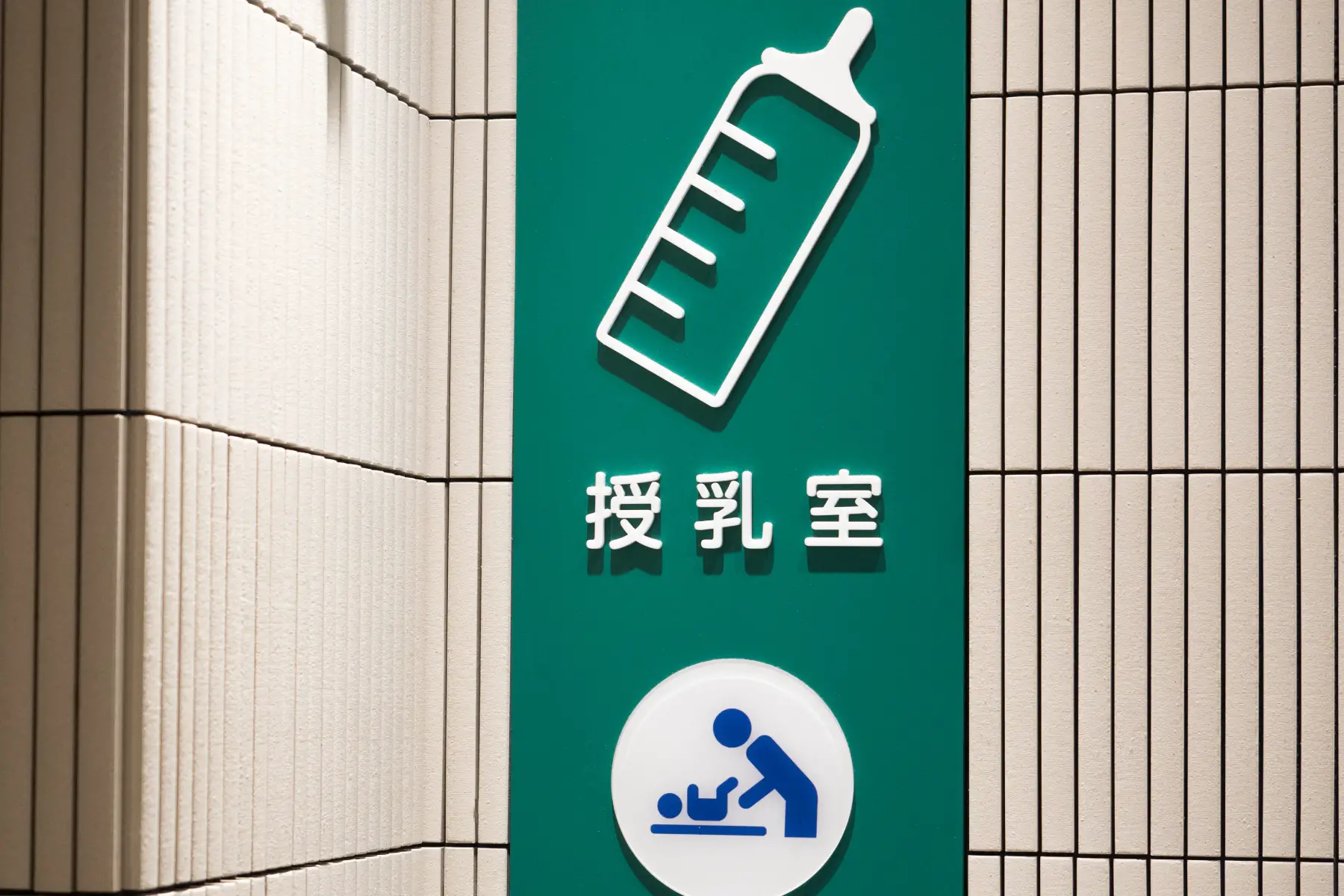
Midwives in Japan are specialized in lactation work and are available to support mothers and babies in many hospitals and municipalities throughout the country.
Registering a birth in Japan
You must register your child’s birth with your local municipality (自治体, jichitai) or ward office within 14 days of their birth, including the day of birth.
Japanese law requires both members of a married couple to have the same surname. The father’s surname passes to a child at birth, along with a given name but no middle name.
You will need to bring the following documents with you when you register the birth:
- Maternal and Child Health Handbook (母子健康手帳, boshi kenko techo)
- Notification of Birth (出生届, shussho todoke)
- Passports of both parents
- Residence Card of the person submitting the Notification of Birth
If you are a permanent resident and your baby will stay in Japan for more than 60 days, one of the parents must submit an Application for Certificate of Eligibility (在留資格取得許可申請, zairyu-shikaku shutoku-kyoka shinsei). You can do so with Japanese Immigration within 30 days of the baby’s birth.
To do so, you must first arrange a passport for your child by obtaining citizenship for it through their country’s embassy or consulate. That said, in order to meet filing deadlines for residency, proof of passport application is acceptable before the passport has been issued.
Adoption in Japan
Japan places a high emphasis on a traditional family unit and allows only married couples to adopt. In other words, LGBTQIA+ families cannot adopt a child in or from Japan. That said, in recent years, some cities in Japan have passed laws allowing same-gender couples to foster children. However, the process can be complicated and frustrating.
You/the child must meet the following adoption criteria in Japan:
- Any birth children must be over the age of one
- Be financially competent
- Be legally married for a minimum of three years
- Be less than 45 years older than the adopted child
- Have a stable relationship
- Have completed any other adoption procedures
- Not be seeking fertility treatment
- Reside in Japan for a minimum of three years from submitting the adoption application (for foreign nationals)
The International Social Service Japan (ISSJ – 日本国際社会事業団, Nihon Kokusai Shakai Jigyodan) is a non-profit that helps to place children with families, register births for unregistered babies, and reunite families across international borders. Minato Ward (港区, Minato Ku) in Tokyo also provides helpful information about fostering children in Japan.
Non-residents, visitors, and tourists giving birth in Japan
Fortunately, Japan’s universal healthcare system means that you won’t have any trouble finding a clinic or hospital to assist you with giving birth while visiting the country. However, if you do not have Japanese public insurance, you must pay all the costs upfront, at the time of care, either in cash or with a credit card. Afterward, you can make a claim directly with your insurance company.
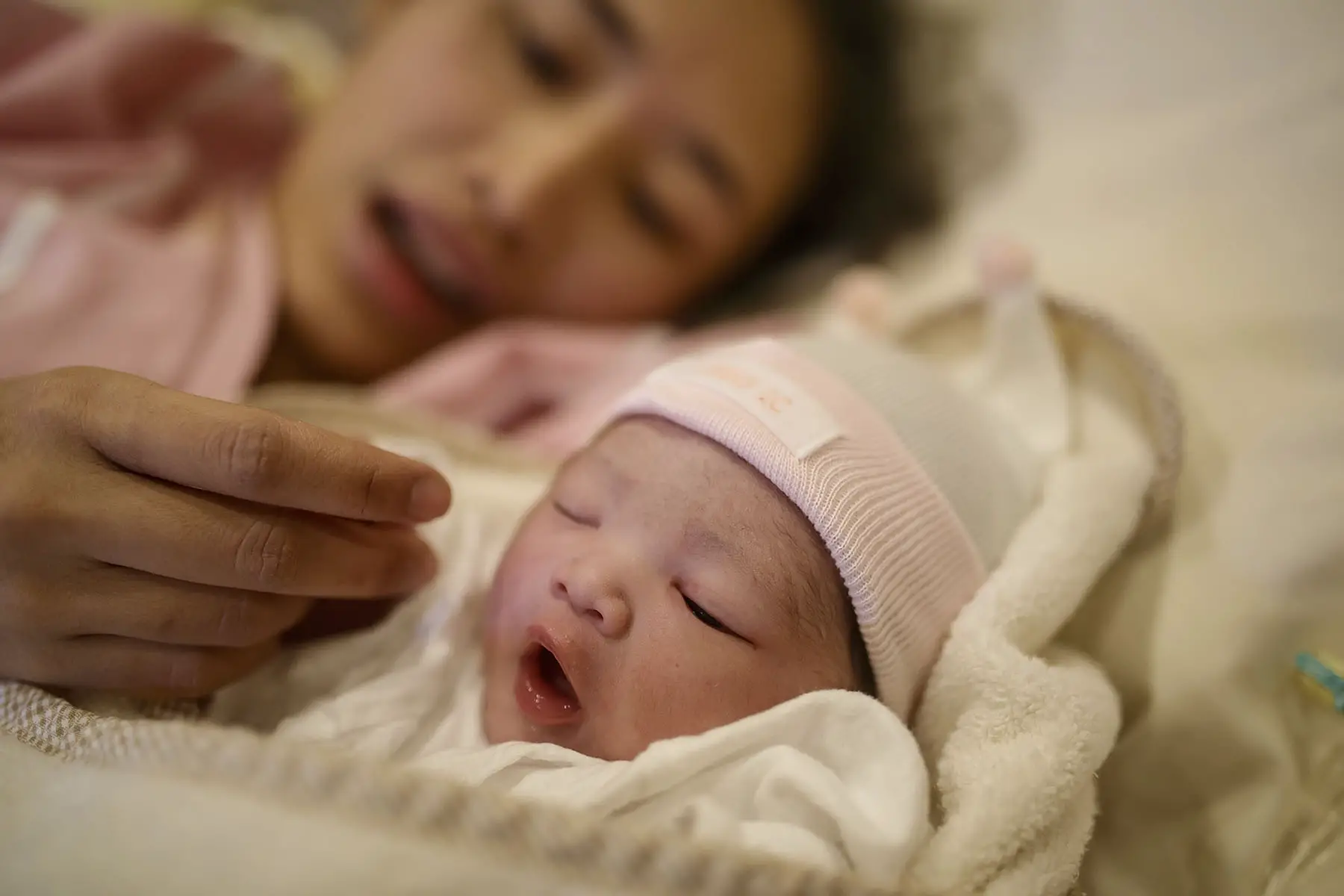
It is important to keep in mind that many hospitals and clinics require you to make a reservation more than 20 weeks before your due date. Therefore, you may have trouble finding somewhere to give birth at the last minute. However, in the event of an emergency, you can call an ambulance (救急車, kyukyu sha) on 119 or go to an emergency room.
After your baby is born, you will need to contact your consulate or embassy to obtain citizenship and a passport for the child before you can travel home together.
Will your child get Japanese citizenship?
Babies who are born in Japan and have at least one parent who is a Japanese national may obtain Japanese citizenship at birth. However, if both parents are foreign nationals, their baby will not be eligible for Japanese citizenship. This also applies when both parents are permanent residents.
Parental leave in Japan
In order to combat Japan’s record-low birth rate, the country’s labor laws include specific sections on maternity leave, paternity leave, shared parental leave (育児休暇, ikuji kyuka), and unpaid parental leave.
New mothers can access up to 14 weeks of maternity leave (beginning six weeks before and extending eight weeks after childbirth) and fathers are entitled to 12 weeks. During this time, the mother should receive two-thirds of her salary.
Both parents are also eligible to receive up to one year of childcare leave after their child is born. During this time, they may receive roughly 67% of their salary for the first six months and 50% for the last six months.
If you are pregnant, you are free to tell your employer as soon as you feel comfortable doing so. Notably, expectant mothers are eligible for special protections such as working shorter hours, having time off for checkups, and avoiding potentially hazardous environments.
Child benefits in Japan
Japan offers many child benefits to try and encourage their citizens to have children. One of these benefits is granting better access to schools and other forms of childcare across the country. The government is also considering raising childcare leave payments to enable more men to concentrate on parenting.
Some major changes are also being made to the country’s Child Rearing Allowance (児童扶養手当, jido fuyo teate) in order to provide more financial support for parents. For instance, in March 2023, it pledged to remove the income limit for child allowance, enabling households to receive a monthly allowance of ¥10,000 or ¥15,000 per child until they graduate from high school.
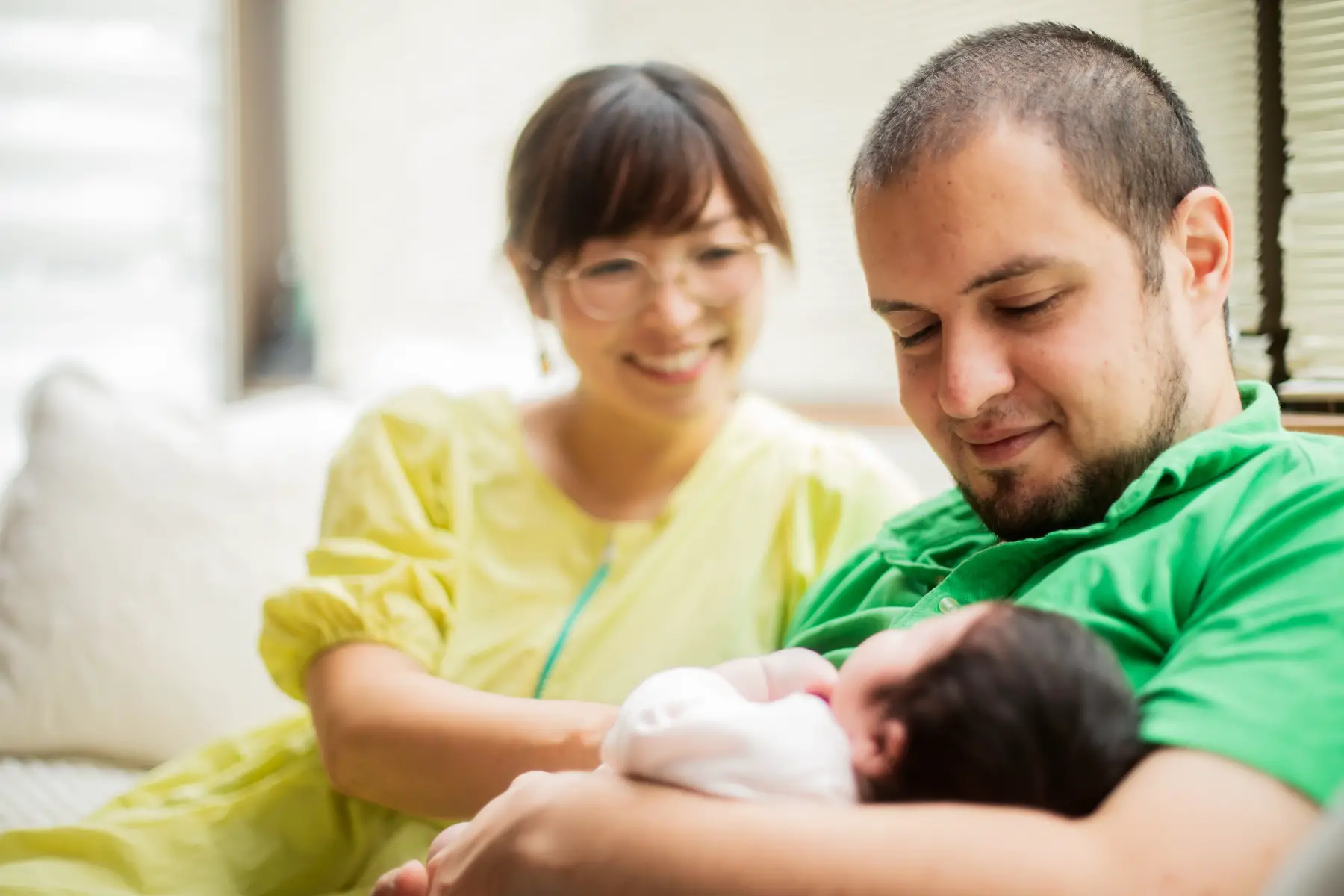
There are also plans to provide a ¥30,000 monthly child allowance to low-income families, and a separate ¥50,000 per child to low-income single and married parents.
You can check with your local government office to see what kind of support may be available in your area. You might also want to explore what tax deductions are available for childcare expenses that you incur while you are working.
Useful resources
- Daily Tamahiyo – an app that provides daily updates on your baby during pregnancy
- Japan National Tourism Organization – provides a searchable list of medical institutions across Japan
- Kanagawa International Foundation (KIF) – provides a downloadable PDF parenting chart for foreign residents (in 10 different languages)
- Ministry of Health, Labour, and Welfare of Japan – a guide to necessary procedures and available services for pregnant women in Japan
